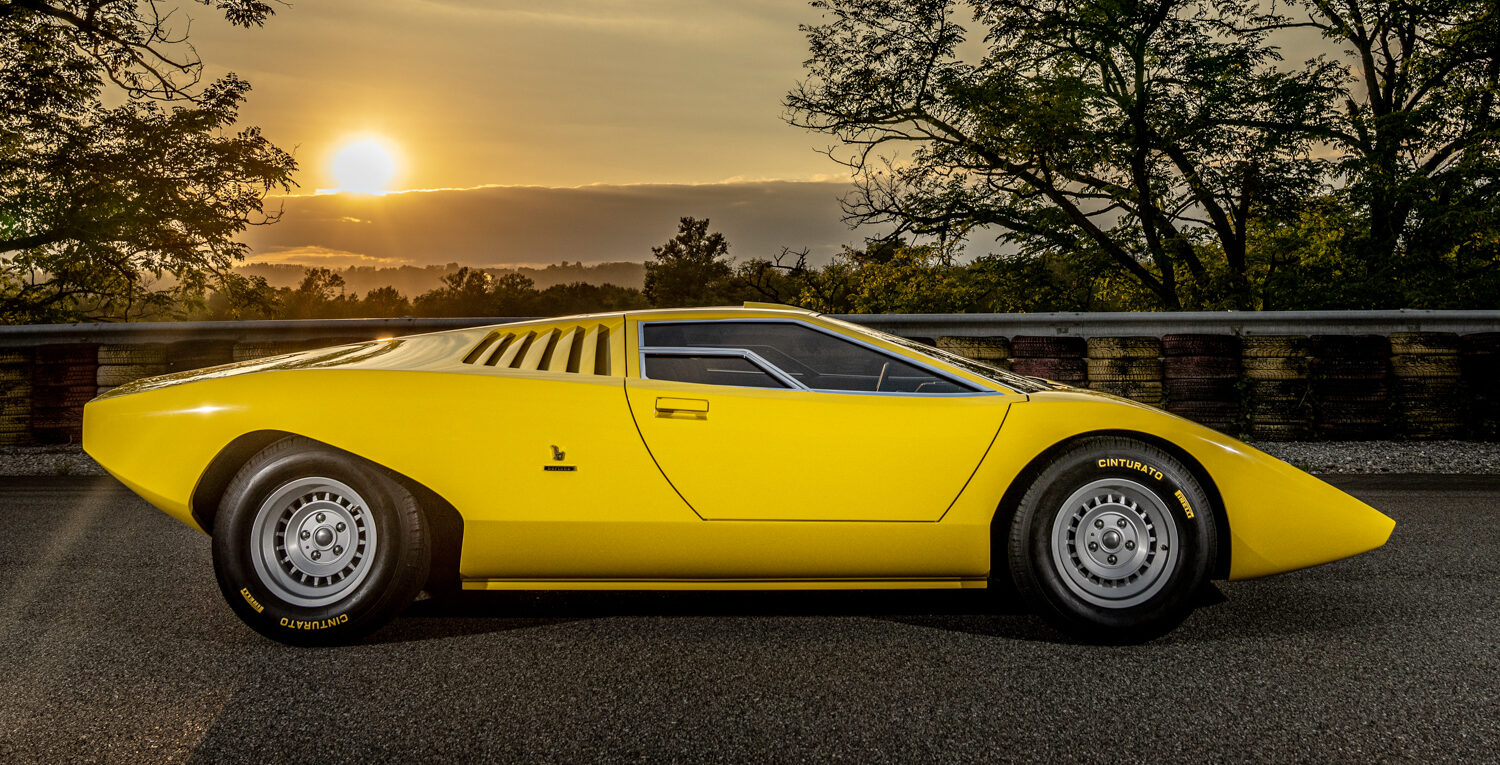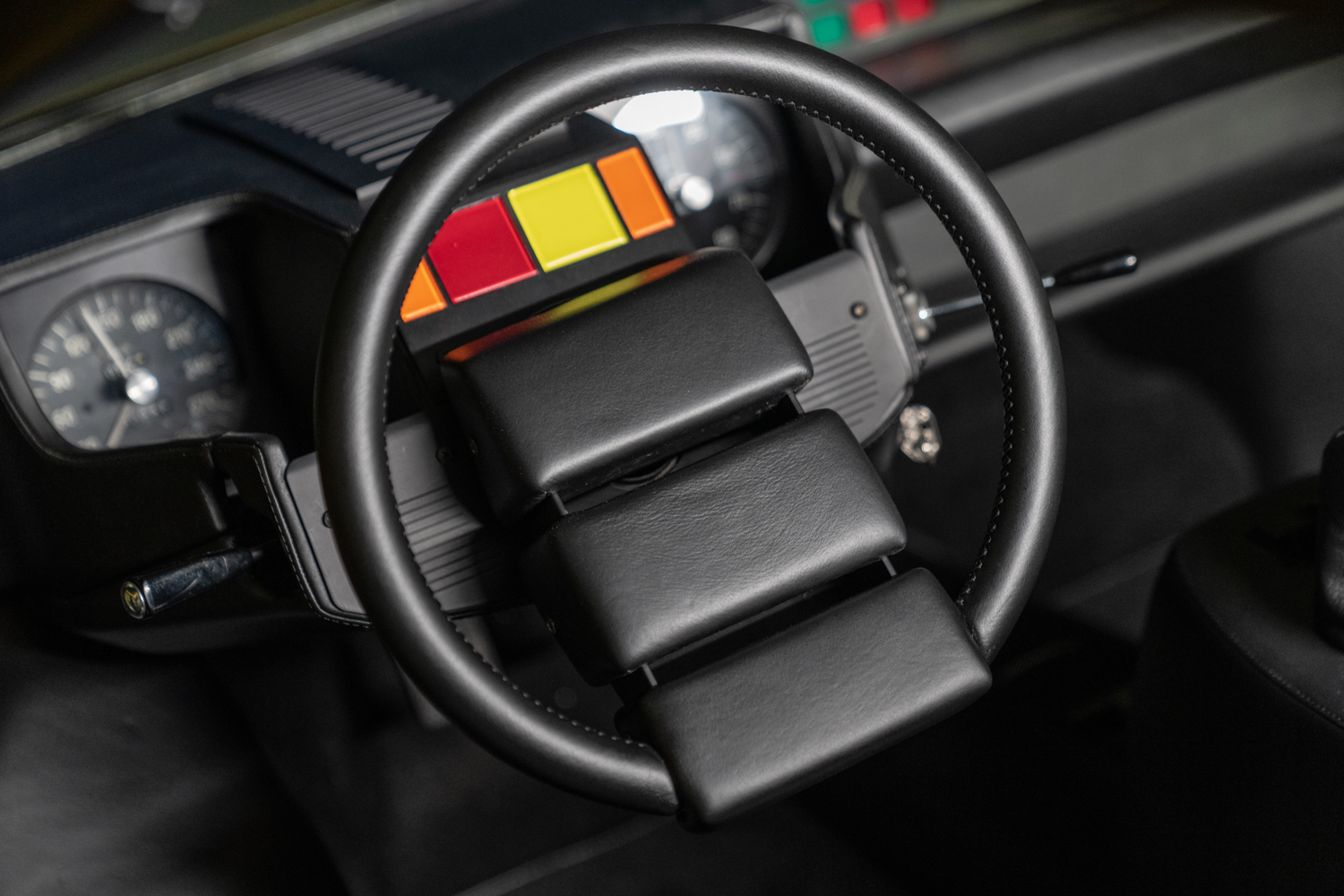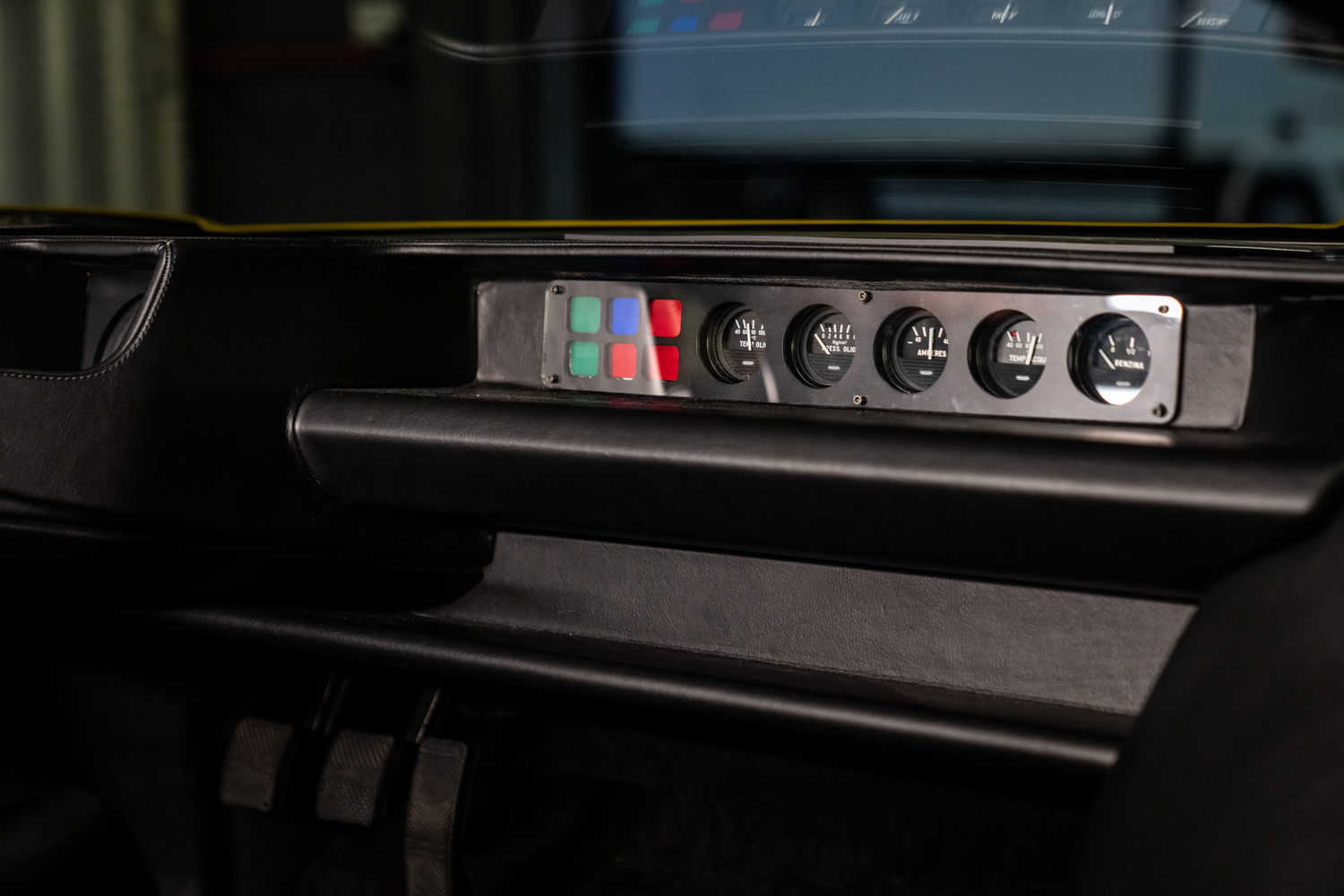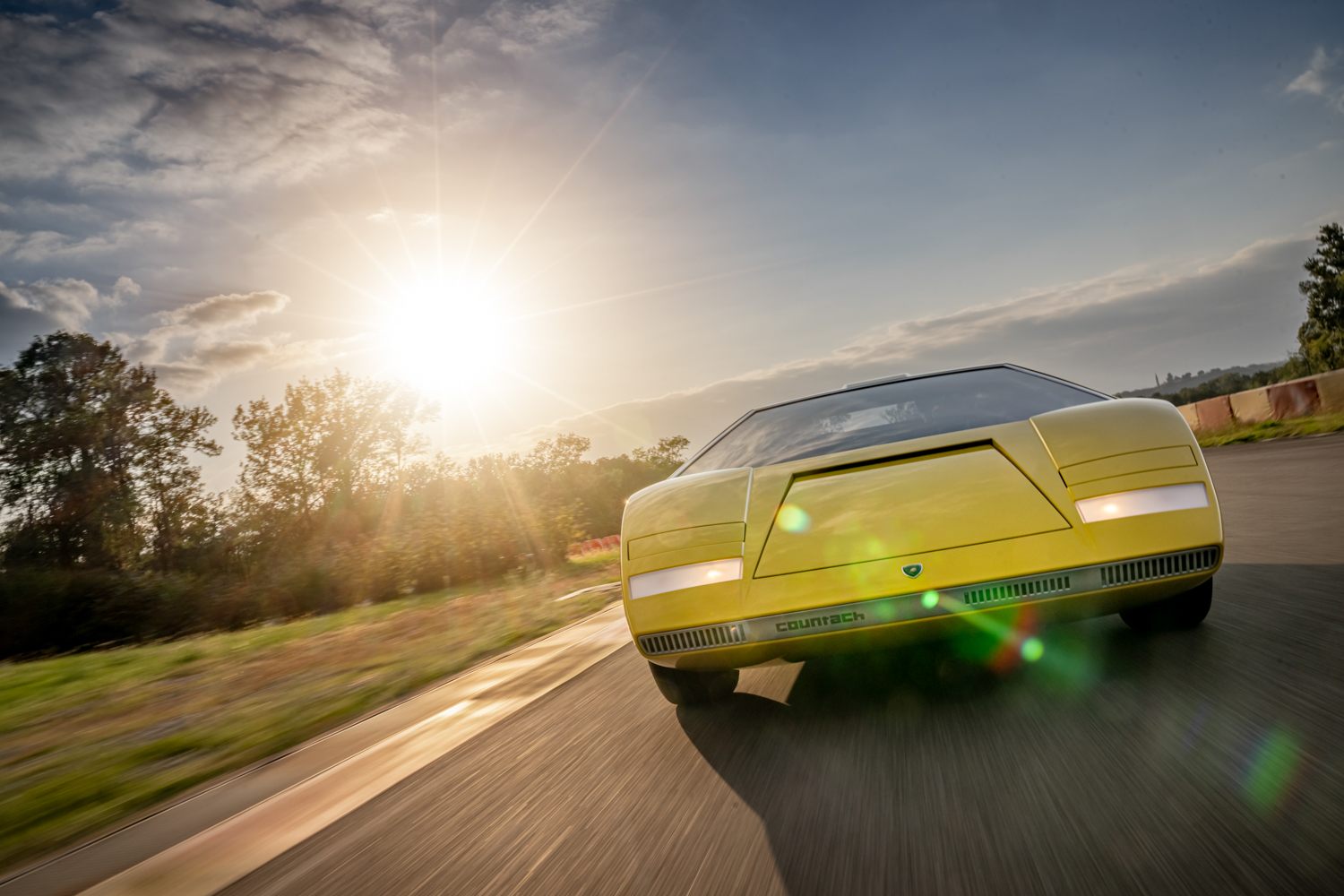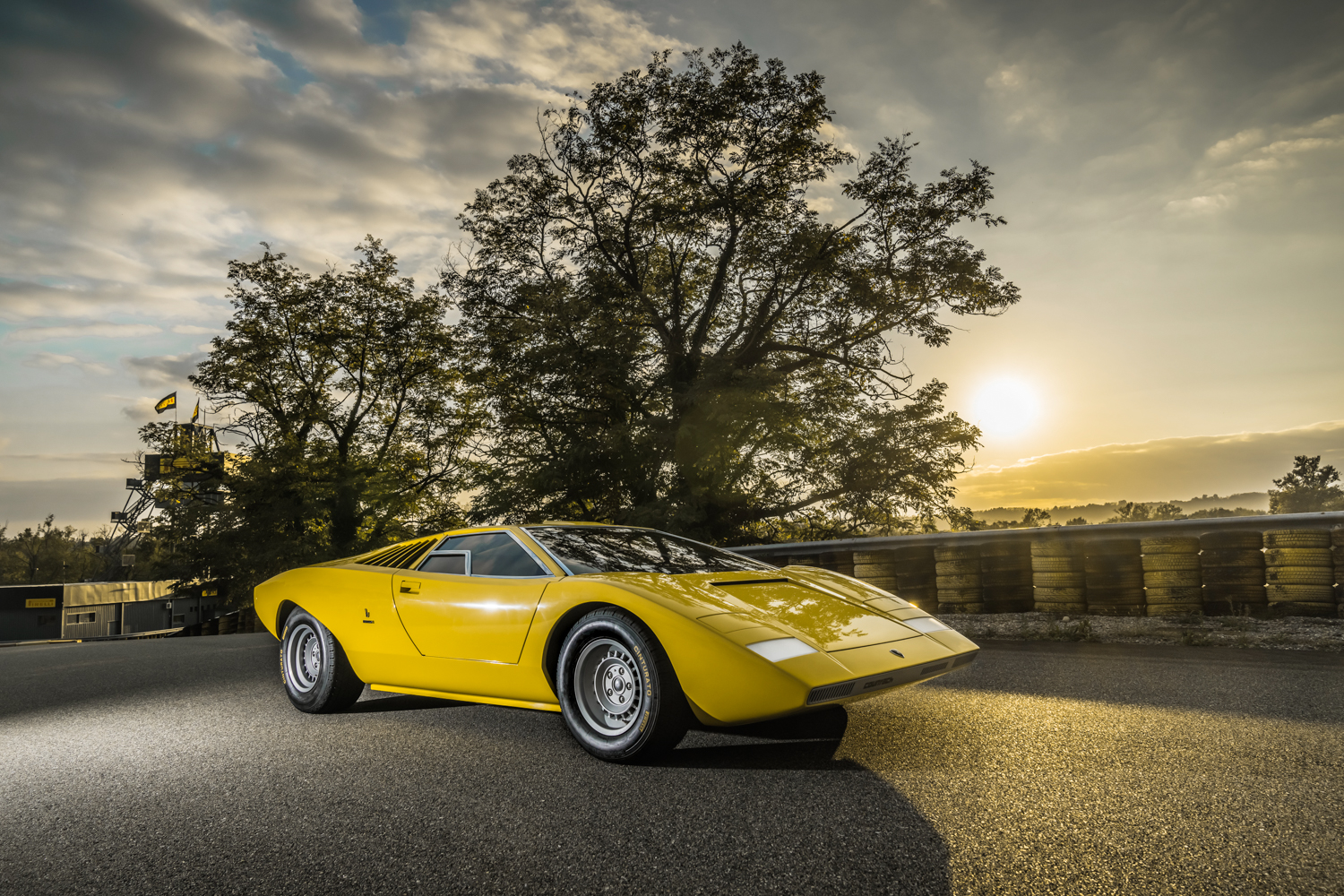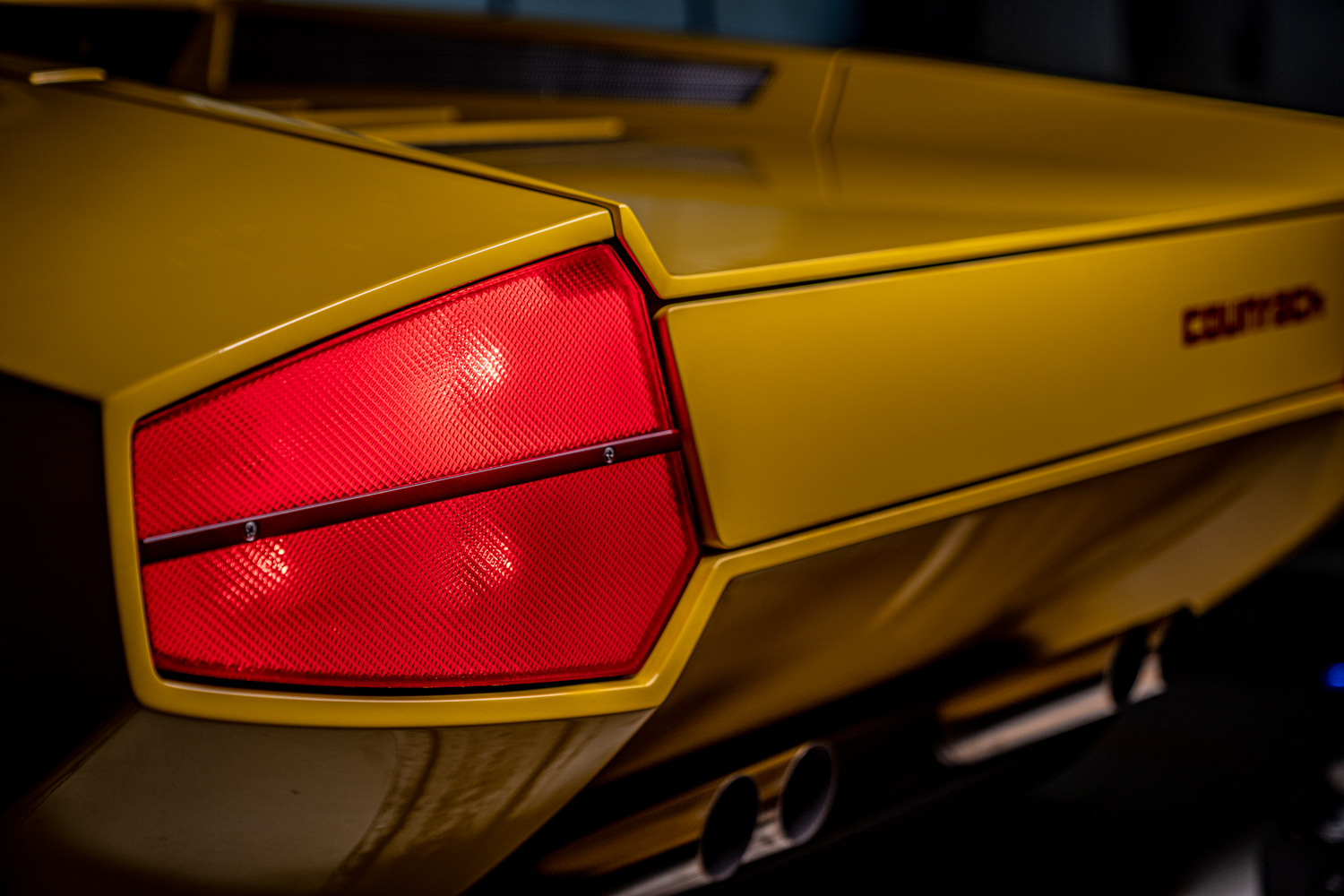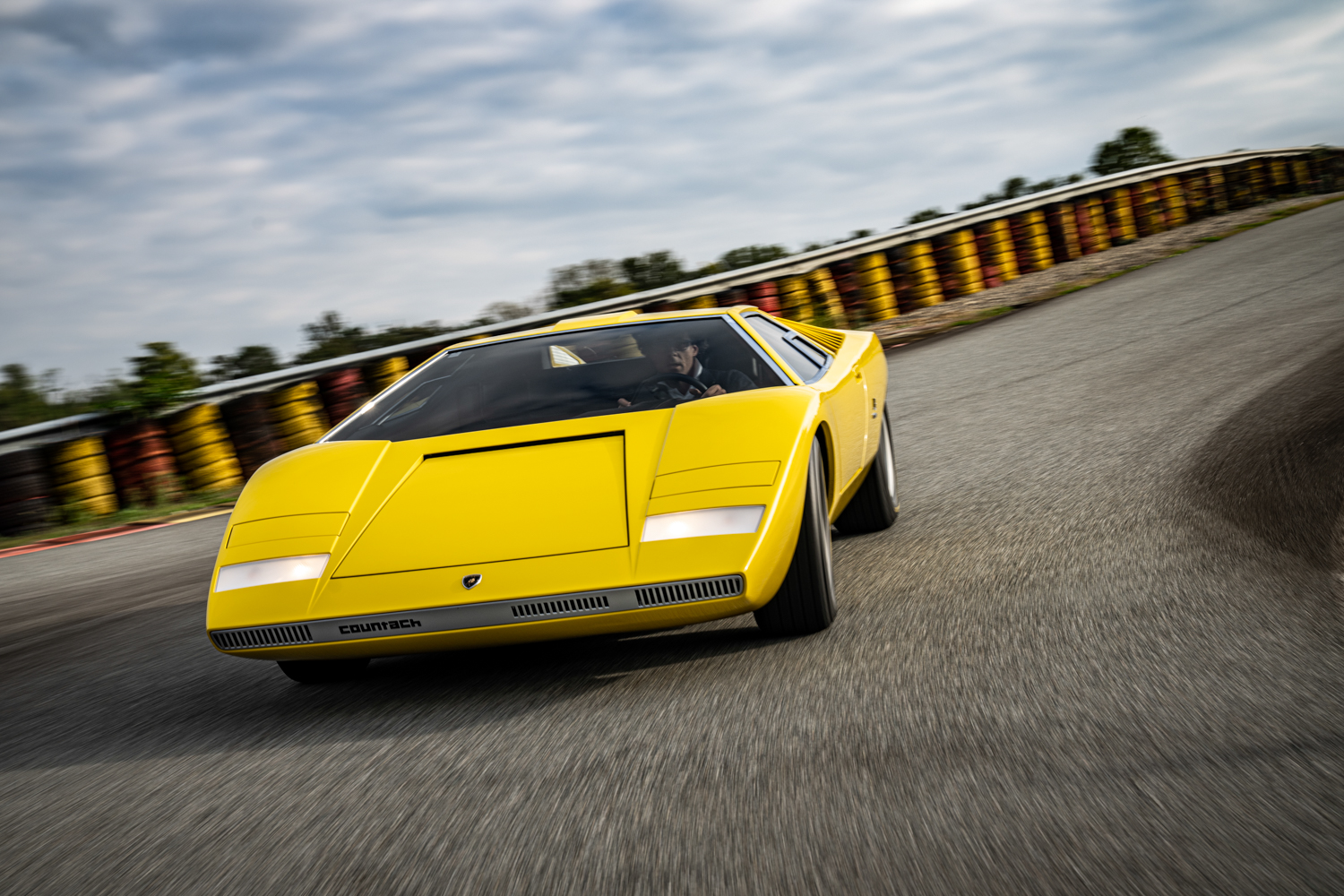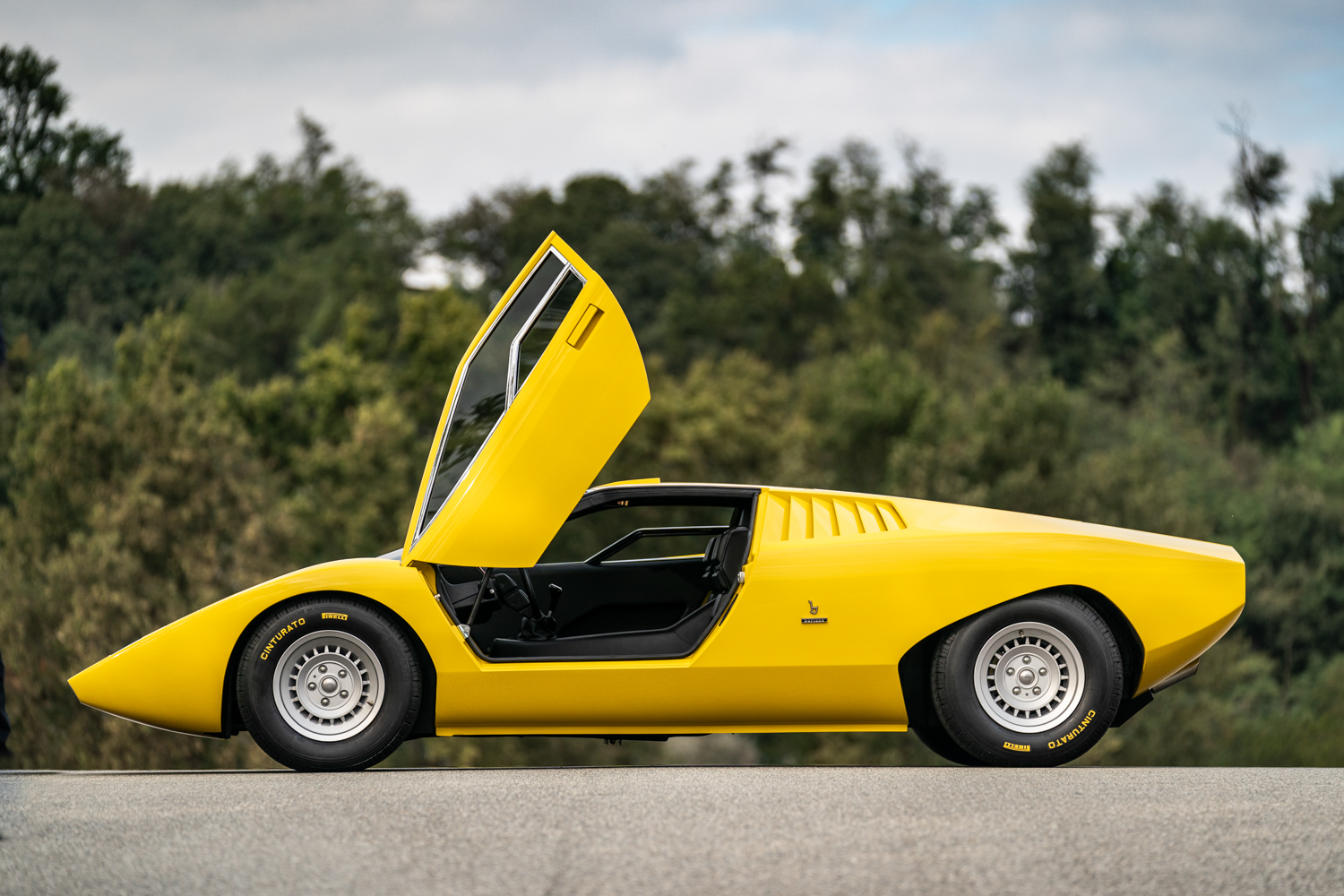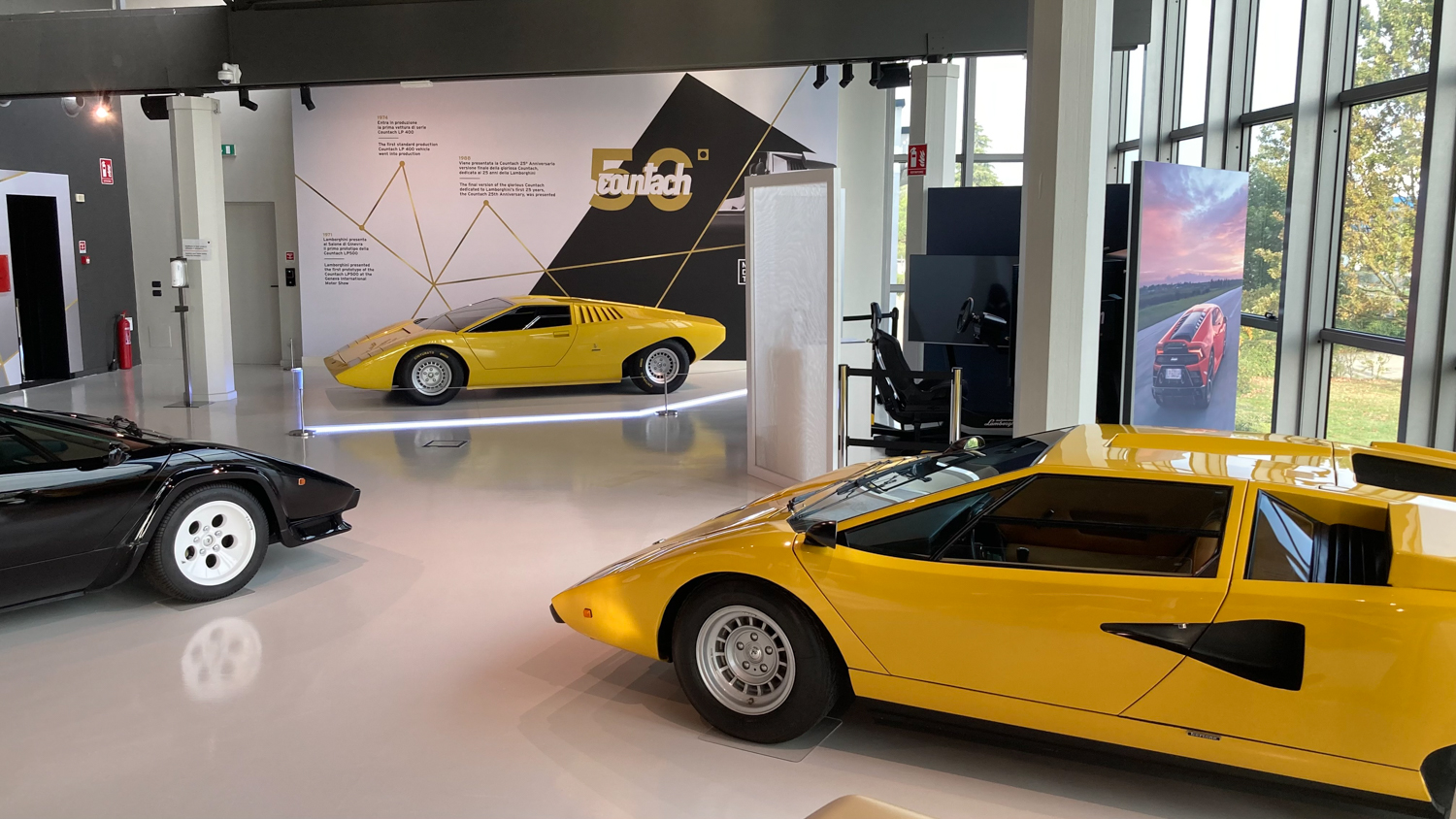At the Geneva Motor Show in March 1971, Automobili Lamborghini presented its “idea car”, the LP 500 Countach. Designed by Bertone’s Marcello Gandini, the car immediately became the star of the show, and the photographs of it, which went viral, were published in major magazines around the world.
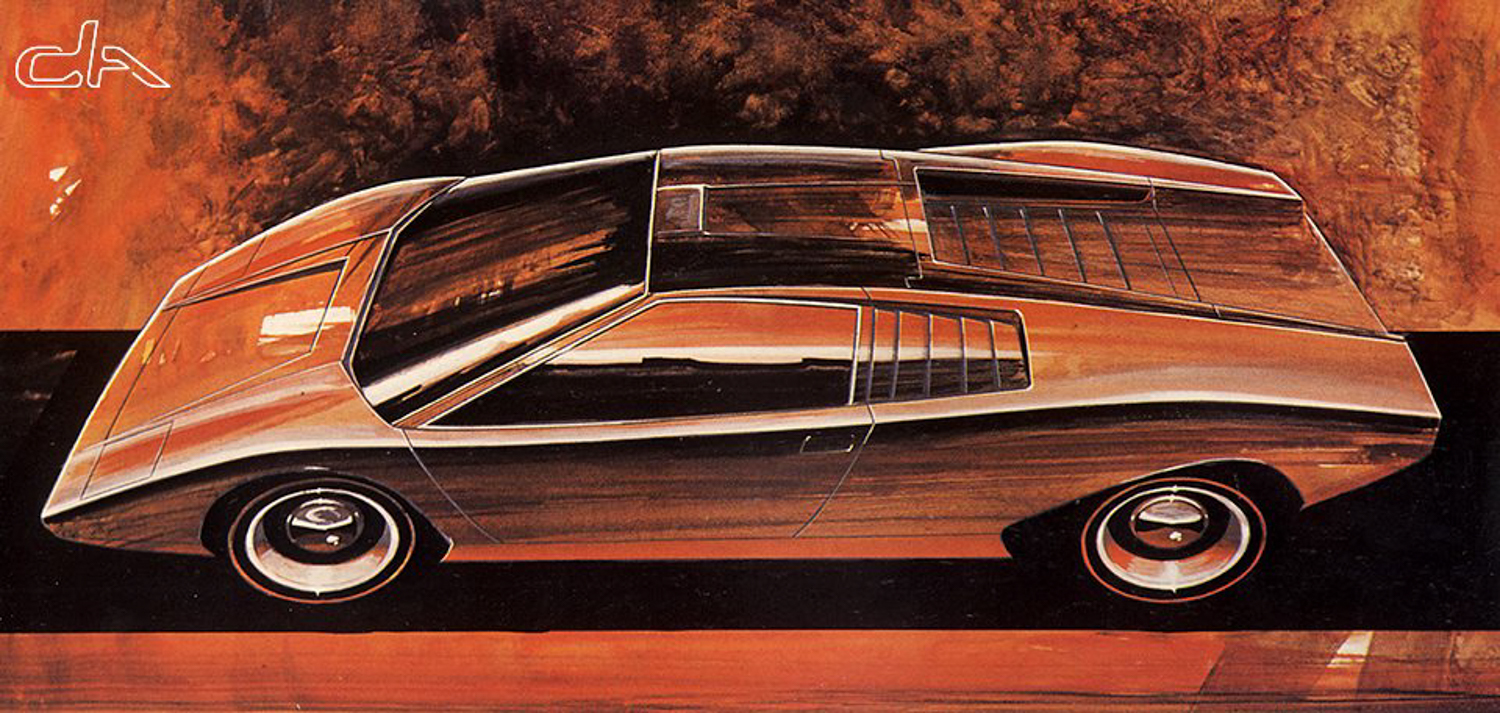
This new model was conceived to replace the legendary Miura and to write a new page in the history of the automobile, both for its technology and design. After three years of development, the LP 500 was sacrificed in crash tests, in March 1974, and then disappeared. But over the next 20 years, the LP 500 would live on—at least in spirit—in the 1,983 Lamborghini Countachs that would come after it.
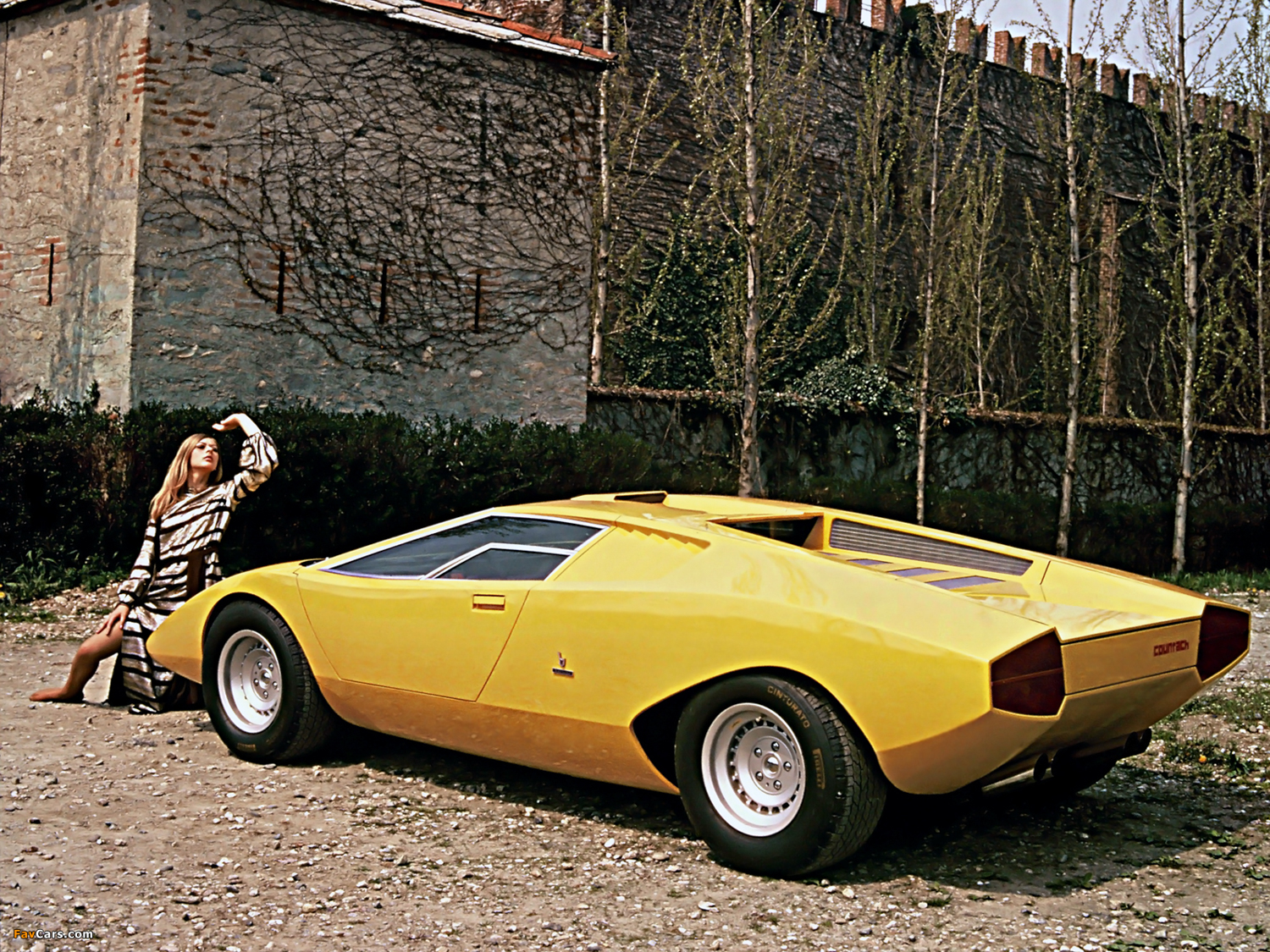
Decades later, near the end of 2017, Albert Spiess, a classic car aficionado and important Lamborghini customer, asked Lamborghini’s Polo Storico restoration division if there was any possibility of creating a reconstruction of the Countach LP 500, the legendary prototype that now only lived on in period photographs.
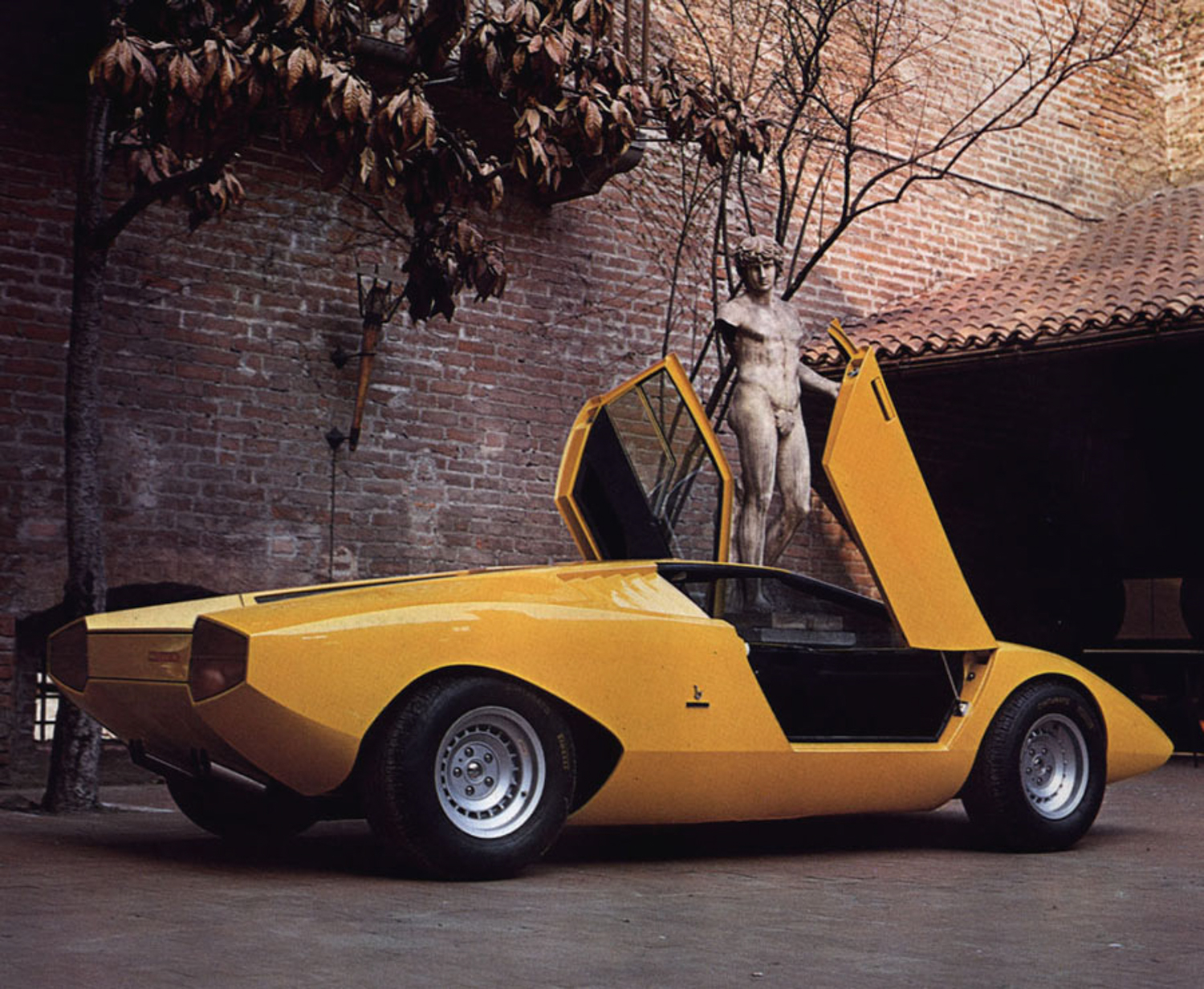
Lamborghini’s first months were spent acquiring all the material available and undertaking an in-depth analysis. “The collection of documents was crucial,” underscored Giuliano Cassataro, Head of Service and Polo Storico. “There had been so much attention paid to all the details of the car, to their overall consistency and to the technical specifications.”
Photographs, documents, meeting reports, original drawings, and the memories of some the protagonists of the time: all this contributed to establishing the form and function of every single detail as accurately as possible. The support of Fondazione Pirelli was also fundamental in providing historical archive material to recreate the tires mounted on the original LP 500 model.
The work began on the platform chassis, which was completely different from the tubular frame of the Countach models that would follow. In addition to physically redesigning it, Polo Storico had to decide which work system to use for building it in order to respect the production methods of the time. The same procedure was used for the bodywork, with various modern technological instruments employed for its analysis and definition. Once the sheet metal beating phase was reached, technology gave way to the traditional Italian system, carried out by the “battilastra” with his creativity and tools. A similar process was followed for the interior, which included the lighted diagnostic instruments, as shown on the 1971 prototype.
For all the mechanical components, as in 1971, original Lamborghini spare parts or restored components of the time were used, or failing that, parts were completely remanufactured.
For the historical reconstruction part of the original design, Polo Storico turned to the Lamborghini Centro Stile where the team led by Mitja Borkert, Head of Design, set to work on the very challenging project. “The LP 500 is of paramount importance to Lamborghini because it gave rise to the design DNA of all subsequent models,” said Mitja Borkert. “To arrive at the car that debuted in Geneva in 1971, a 1:1 scale styling model was developed, which along with the car itself was lost over time, but extensive photographic evidence of it remains. This is the same approach with which we decided to tackle the project. Starting from publications of the time, from images on homologation sheets and other material recovered from Polo Storico, we were able to reconstruct the mathematics necessary for creating the first 1:1 scale model. The biggest challenge was to create the exact volume of the car, and for this we used the opportunity to take a 3D scan of our LP 400 (chassis 001), which was an enormous source of information. It took us 2000 hours of work altogether to arrive at the final model, with lines that satisfied us. The exact same procedure was followed for the interior.”
Lamborghini’s collaboration with Pirelli – dating back to 1963 – to reconstruct the tires mounted on the LP 500 prototype proved to be invaluable. Thanks to the images and materials preserved in the archives of Fondazione Pirelli, it was possible to use the original plans of the Cinturato CN12 tire fitted on the LP 500 for its Geneva debut. From these documents, the Milanese company’s technicians set out to create the Cinturato CN12 of the Pirelli Collezione range, today’s line of tires dedicated to the most iconic cars built between 1930 and 2000, which preserve the originality of the rubber by combining a vintage image with modern technology. Specifically, the Pirelli Cinturato CN12 tires for the Lamborghini Countach LP 500 were supplied in the sizes 245/60R14 for the front and 265/60R14 for the rear, and are now fitted with the same tread pattern and aesthetics as in the 1970s, but with a modern compound and structure.
Finally, when it came to choosing the color, the PPG archives proved to be crucial, making it possible to identify, after careful analysis, the exact composition for producing the yellow color used, identified as “Giallo Fly Speciale”.
Following its debut at the recent Concorso d’Eleganza Villa d’Este, the LP 500 was the star of the “Countach LP 500: The Shakedown” event (held on Oct. 8) at the Vizzola Ticino racetrack, in the presence of the collector who commissioned the reconstruction and the suppliers who participated in its creation.
Pirelli made available its Vizzola Ticino circuit where Polo Storico, after the 25,000 hours of work required for the reconstruction, had the opportunity to test the LP 500 before its official presentation at Villa d’Este: similar to the testing done on the road to validate restoration work on Lamborghini classic cars before they are returned to their owners. The track location was also chosen to officially present the car to the collector, allowing him to experience the emotion of a few laps around the circuit.
Giuliano Cassataro, Head of Service and Polo Storico, commented, “The tests and the shakedown on the track confirmed that the Countach LP 500, as well as being beautiful, is also functional, and the larger size of its tires compared to those of the standard LP 400 (40 millimeters more at the front and 50 at the rear) gives the car an attractive and well-proportioned aesthetic, which makes it still very modern even half a century on from its original debut. We felt it was important to celebrate it together with the customer, and also to share the excitement of seeing it in motion with the suppliers who invested so many hours of work in its creation”.
The resurrected LP 500 is now on display (through November 15) at Lamborghini’s MUDETEC Museum in Sant’Agata Bolognese.
The bare tubular chassis of an LP 400, the second production LP 400, and a 5000 Quattrovalvole presented alongside the first Countach prototype, create a visitor journey to discover the fifty years of history attached to this legendary Lamborghini model.


